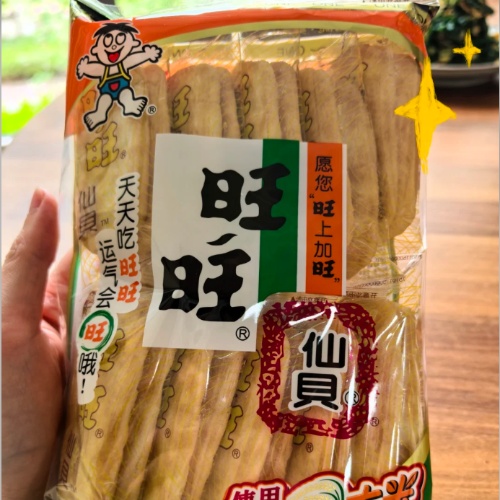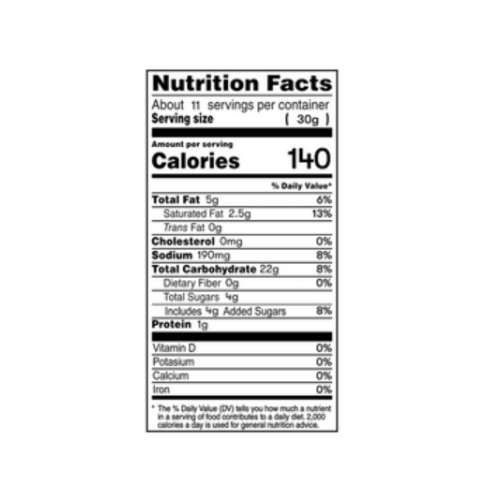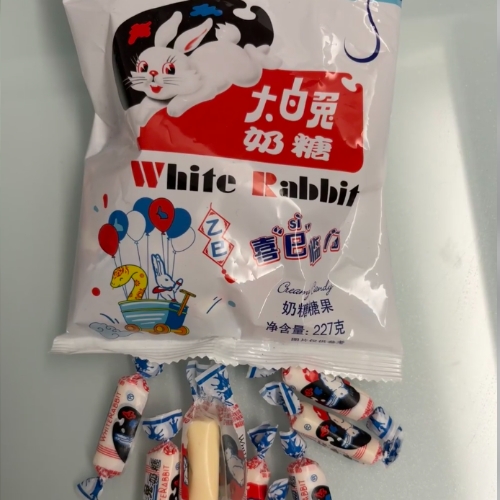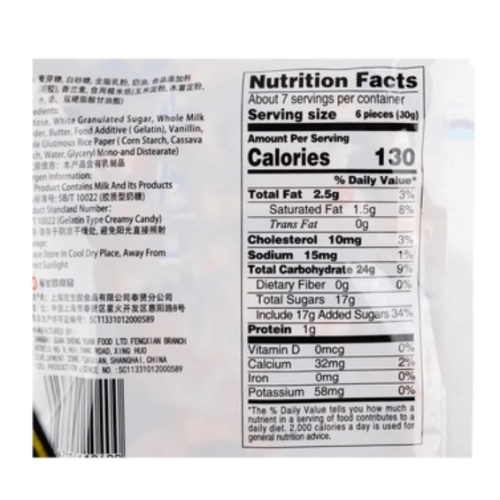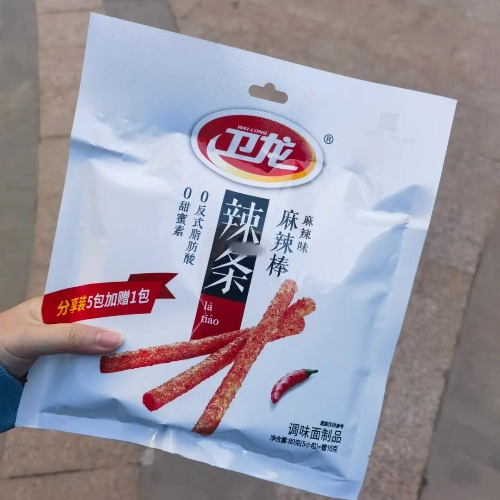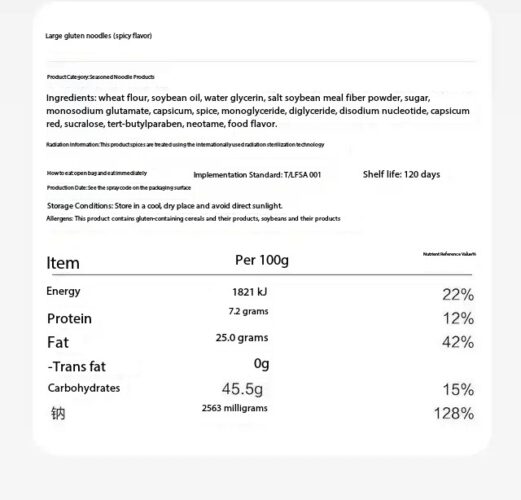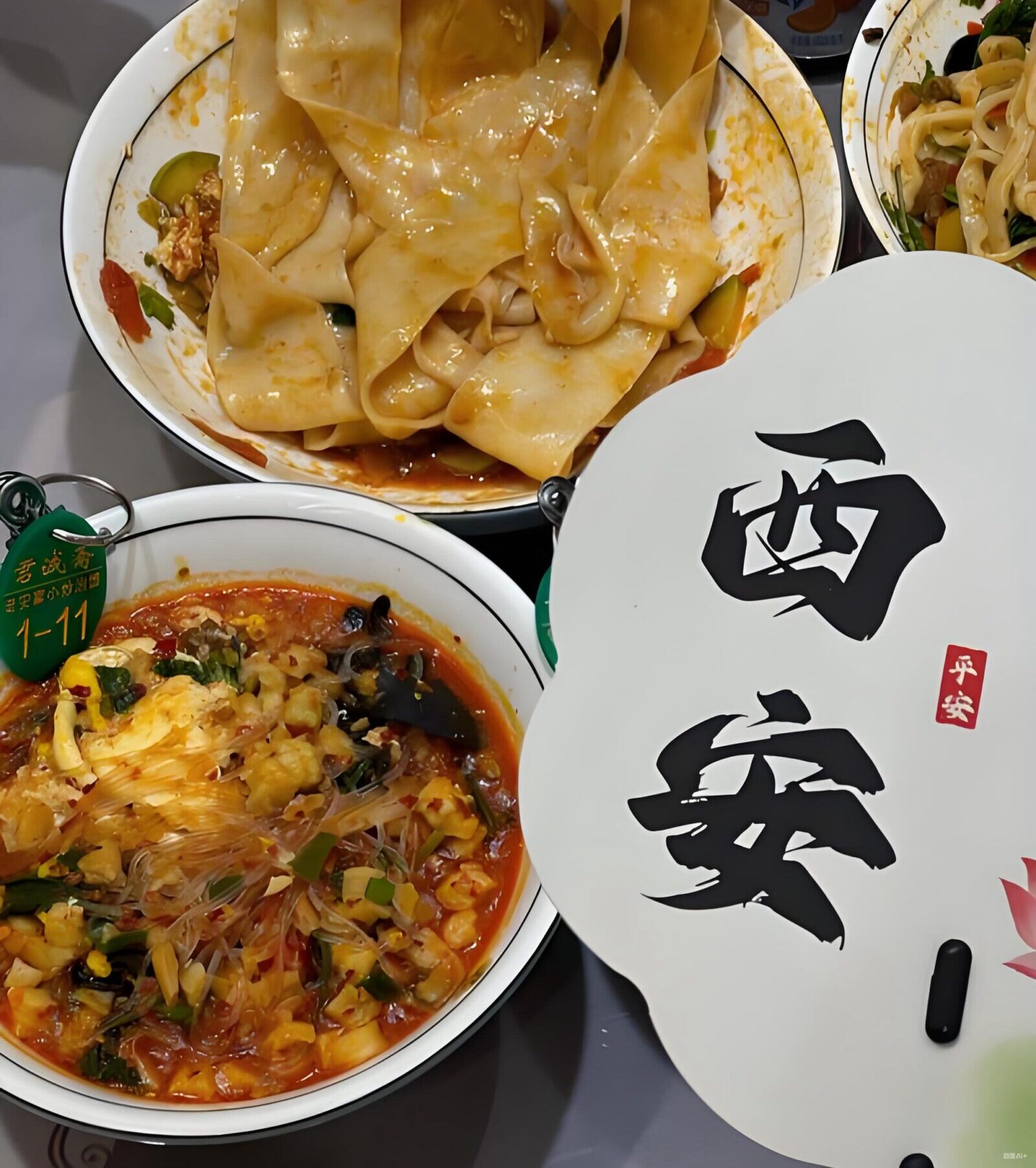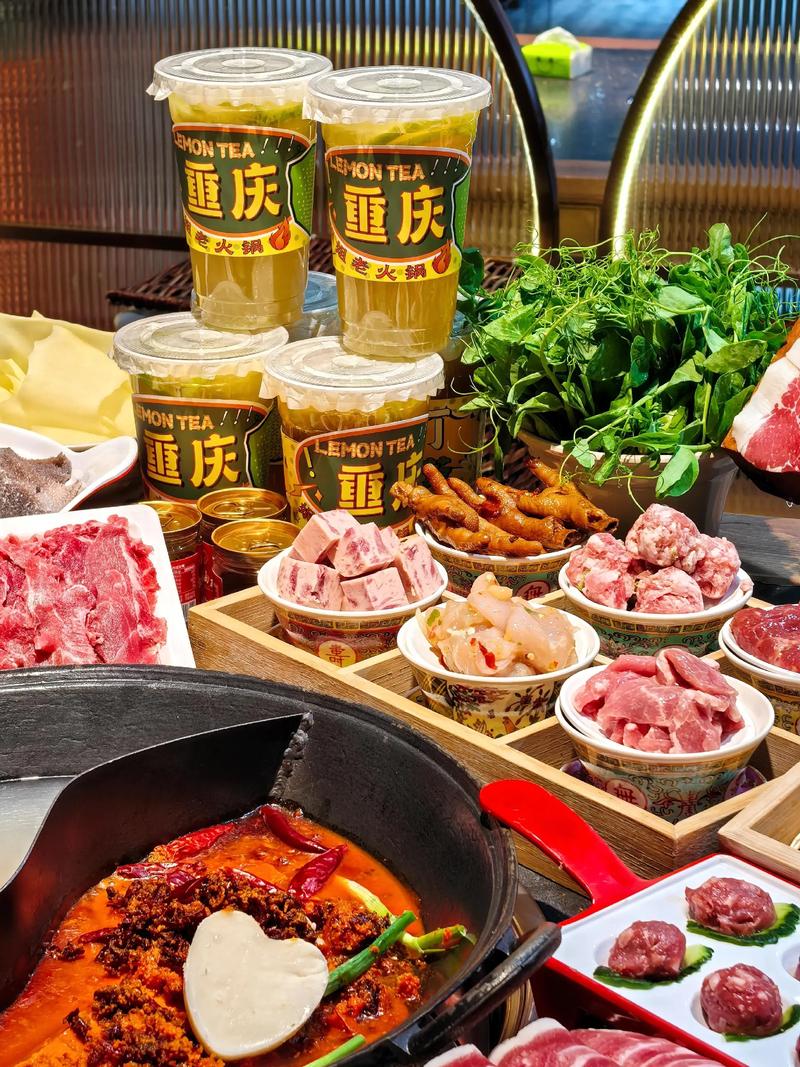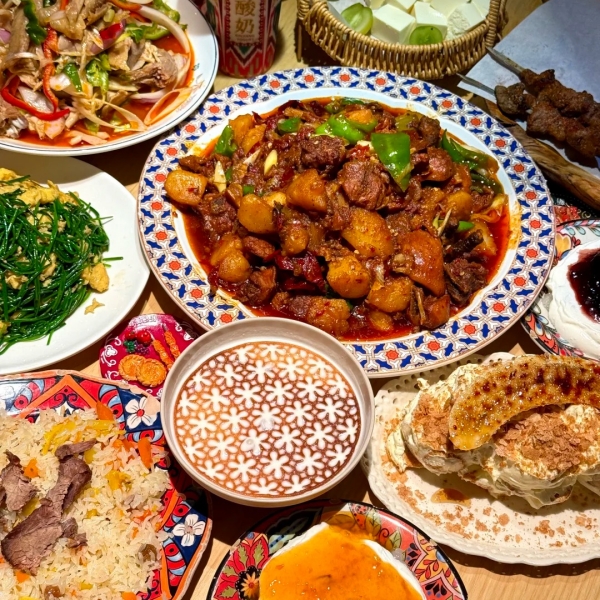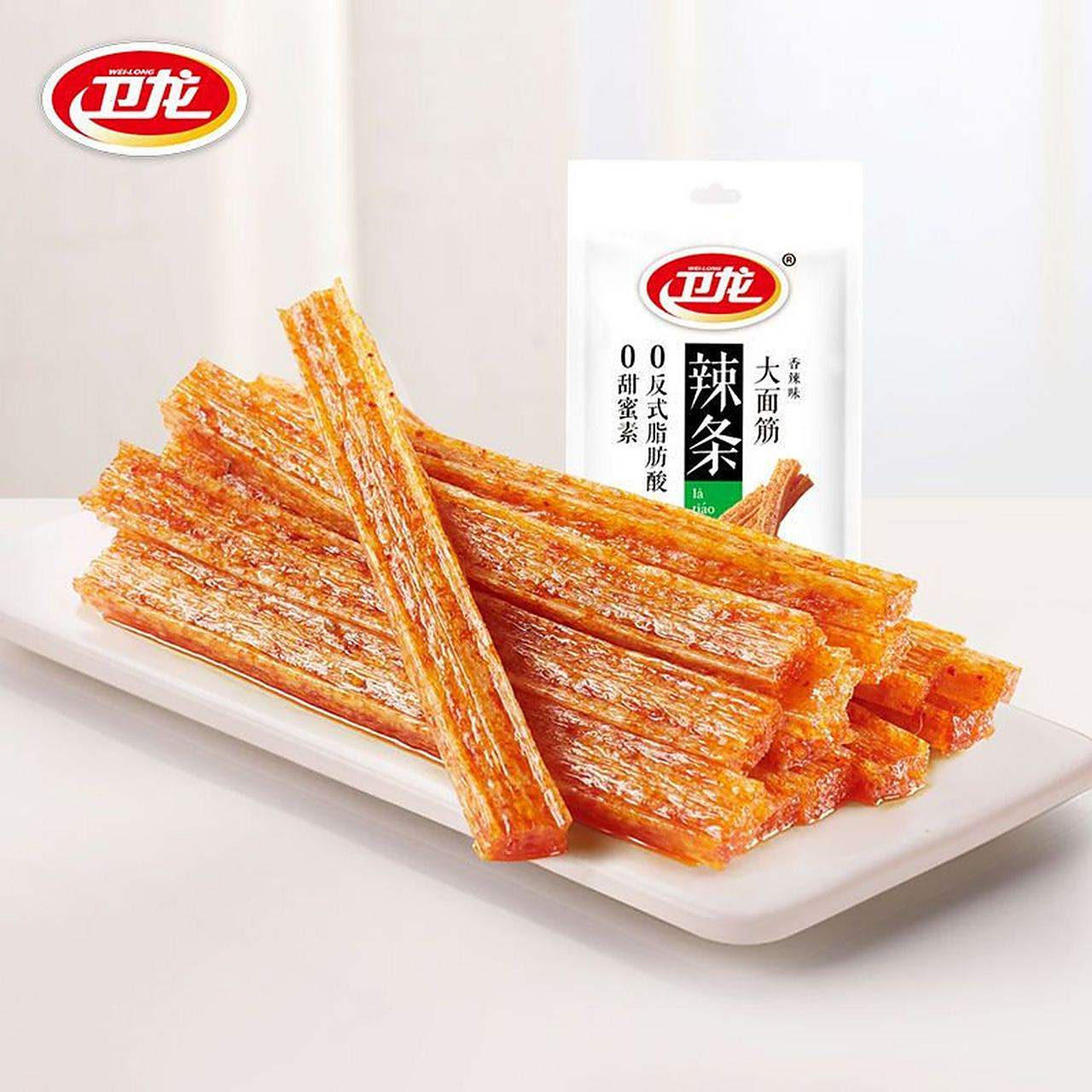
Welong Big Latiao
As an American exchange student in Shanghai, I quickly learned that popular Chinese snacks aren’t just food—they’re a window into local culture. My first month was filled with hit-or-miss tries: from convenience store packaged treats that became dorm staples to street food stalls I hesitated to approach until my roommate dragged me over. After three semesters of exploring every snack aisle and night market, I’ve put together a list of the 10 most beloved options that truly stand out.
Sick of wasting money on tourist-only snacks that locals wouldn’t glance at? After digging through snack aisles and haunting night markets for semesters, I found the real gems: popular Chinese snacks that locals actually stock up on, fight for at convenience stores, and drag friends to street stalls for. I split them into two easy groups for you: packaged picks you can grab at any Family Mart or 7-Eleven (perfect for easing into things, no Mandarin needed) and street eats that hit different—authentic, bustling, and so flavorful you’ll forget the language barrier. Planning a trip? These are the bites that’ll stick in your memory, not the boring tourist stuff. Curious which ones locals can’t live without? Keep scrolling.
Part 1 - Packaged Chinese Snacks (The Safe Starting Point)
When I couldn't get up the nerve to try street food, this stuff served as my lifeline. All three of these spots, Family Mart, 7-Eleven, and Carrefour, are convenient places to find them—are perfect for beginners. Nevertheless, starting with packaged Chinese snacks has such a major advantage: Their lists of ingredients are plain to see (kind of), all the items are priced out in big print, and you won't have to know any Mandarin to place an order.
It was a matter of simply taking one of each option that looked interesting, and keeping the ones I liked while practicing acrobatics to avoid the ones I didn't. Is this costly? Maybe. But is it worth the cost? Certainly. These favorites from vending machines also illustrate how the popular culture of Chinese snacks balances homey feeling with convenience.
| Name (with Chinese) | Price | Feature |
|---|---|---|
| Want Want Rice Crackers (旺旺仙贝) | ¥3.5–12 | Crispy, Savory |
| White Rabbit Candy (大白兔奶糖) | ¥5–40 | Creamy, Chewy |
| Spicy Duck Neck (鸭脖) | ¥18–60 | Spicy, Numbing |
| Weilong Spicy Gluten (卫龙辣条) | ¥2-15 | Chewy, Oily, Spicy |
| Dried Tofu Snacks (豆干) | ¥6–12 | Chewy, Protein-rich |
Want Want Rice Crackers (旺旺仙贝) - My Dorm Room Staple
- Want Want Rice Crackers
- Nutrition Facts
It was during midterms. A huge bag came to us from the roommate's mother. Out of politeness, I took one. And then five more. I get the flavor of soy sauce different - it's smoky without being too salty and crunchy enough to wake people up (sorry roommates). I've heard people complain about MSG, but honestly? That's not something that bothers me at all.
As for the foreign dignitaries who are making their gloss on Want Want, this is the part. Basically it's a rice cracker, nothing too strange for them to eat. The taste isn't extreme like some other Chinese snack sensations. What's more, since they are packaged as singles, you won't eat an entire bagful at a go. Or at least you won't do so unregretfully. Used to find them in literally any convenience store. Small packs cost ¥3.5 to ¥5, big bags run ¥8-12. A kid's face on the wrapping–ya can't miss it.
White Rabbit Candy (大白兔奶糖) - The Nostalgia Trip
- White Rabbit Candy
- Ingredient Facts
There was a time when I finished here having nothing. On one of those class days, my Chinese class professor passed around a bag of these things. She was telling me as a 90s child that she used to eat them and they were special occasion candy. I took one and immediately got what all the nostalgia over White Rabbit candies was about. Such a soft bite, so creamy, and nothing like American candy sweet. Think of it as a grainy camera where snaps don't fade away instantaneously.
No one ever told me before, but there's a thin wrapper made of rice paper that surrounds each piece. And this is edible. When I first attempted to peel it away, my professor called a halt. "The whole thing, wrapper and all, is eaten," he said. What a surprise for me! I still find it a little odd, but it works. Unique interactions like this are part of what makes the popular Chinese snacks so endearing.
Spicy Duck Neck (鸭脖) - The Acquired Taste
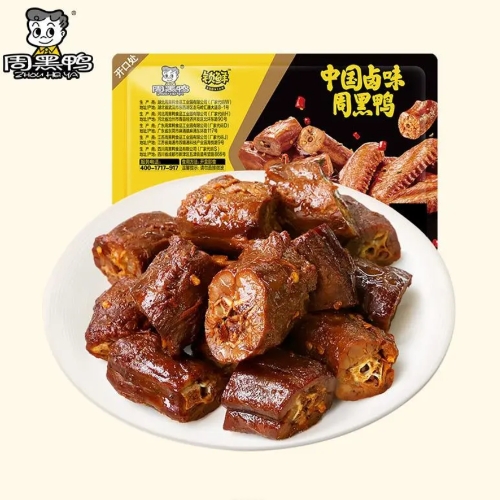
Spicy Duck Neck
It took me three tries to acquire this taste. The first time, I watched my Chinese friend down a bag while we were on a train from Beijing to Hangzhou. I asked for a piece and was immediately sorry. Why is everyone so wild about this stuff? The bones get stuck in your teeth, the málà (麻辣) spice sends waves of numbness through your mouth and you're more or less eating a duck's neck. It just doesn't seem right.
After I read the Instructions, I too became an enthusiast for duck neck. One doesn't just bite into it. The meat is dug out with teeth, the tiny bones avoided and the sensation that can only be described as "tingling" enters your body. Once you've passed this rite of passage and learned to appreciate duck neck, nothing is worse. The pepper gives a kind of a tingling-hot taste attuned to the taste buds. It does not burn, just kind of tingles. And beneath this, there is a rich savoriness that keeps your hand reaching back in, no matter how much you've had. Of all China's favorite snacks, duck neck is the ultimate test of your tolerance for heat.
Weilong Spicy Latiao (卫龙辣条) - The Addictive Heat
- Weilong Spicy Latiao
- ingredient list
Every Chinese kid grew up with these fiery strips, and now they are a national obsession. I first saw my classmates tearing into bright red packs during breaks, their eyes watering but grinning through the burn. Just then, out of curiosity, I tried one--and instantly understood why Weilong Spicy Latiao (卫龙辣条) has become a cultural phenomenon. It's chewy, oily, spicy, and blearing the standard tones of savory satisfaction. For many, it is how popular Chinese snacks taste.
Want to understand Weilong Latiao from a broader angle? Read Weilong Latiao in China: Why Foreigners Are Obsessed for all the spicy details.
Dried Tofu Snacks (豆干) - The Protein-Packed Surprise
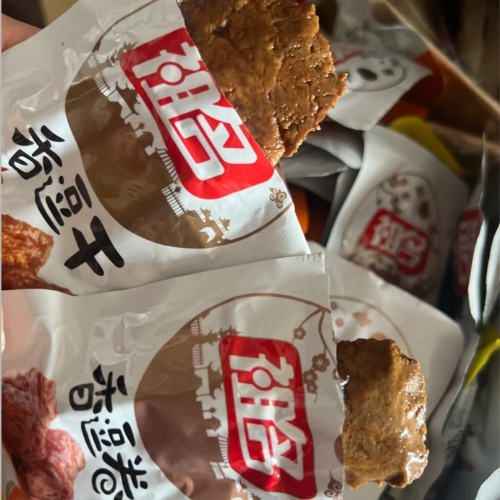
Zu Ming Dried Tofu Snacks
This I learned from my vegetarian friend. Dried tofu as a snack? I was skeptical. But let me tell you that Chinese dried tofu is nothing like the bland (- ass-jerky that you get at American grocers. It's chewy--if you ever have a chance to try some really good stuff, almost almost exactly like jerky--and it comes in a widely varying range of flavors. I tried spicy (麻辣), brown (五香), and BBQ (烧烤味). The spicy one I loved best. Thus it was shown that Chinese snacks of popular demand can also bem both delicious and nutritious.
Part 2 - Street Chinese Snacks (The Real China Experience)
It needs two months to pluck up the courage for street food. Not that it's unclean--you can choose the crowded stalls and actually be quite sure of cleanliness. It's just that ordering is bewildering. My Chinese wasn't very good, I didn't know what was what, and I had this perpetual image of accidentally ordering something odd. Then one night I went with my roommate to a night market near Jing'an Temple--and everything changed.
Smells wafted through the air; the shouts of hawkers rang painfully in my ears; and masses people, in such number that you could almost git lost among them. But the whole thing had--chaos that's good. You'll need a little more courage for these next five snacks. But if you don't try them, you'll miss out on everything the current China offers. This is where popular Chinese snacks become truly dramatic.
| Name (with Chinese) | Price | Feature |
|---|---|---|
| Candied Hawthorn (糖葫芦) | ¥5–10 per stick | Sweet, Crunchy |
| Grilled Squid on a Stick (烤鱿鱼) | ¥10–15 per stick | Smoky, Spicy |
| Chinese Crepes (煎饼果子) | ¥6–10 per crepe | Crispy, Filling |
| Stinky Tofu (臭豆腐) | ¥8–12 per serving | Pungent, Fried |
| Fresh Fruit on a Stick (水果串) | ¥5–8 per stick | Refreshing, Light |
Candied Hawthorn (糖葫芦) - The Winter Special
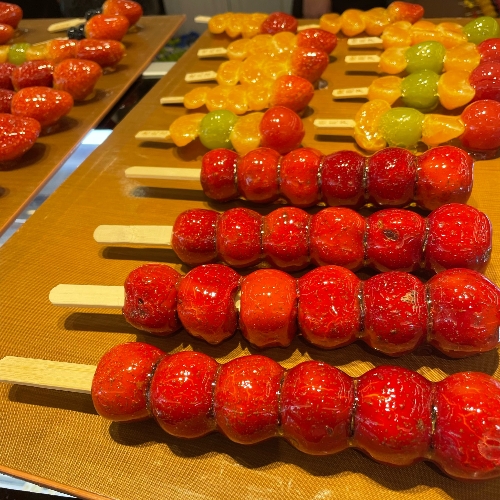
Candied Hawthorn
It was at a Christmas market, the first time I saw these. This was one of our visits during the winter break when there was a vendor. I saw such luscious, shiny red fruit skewers, it looked like doll art. And the candy shell shone in streetlights, almost too perfect to chance eating. I only bought one, honestly, for the photograph.
Incredibly, it turns out that this "yōu táo" consists of candied hawthorn (but shaped like small fruits on skewers). The candy is crunchy when you bite through it, then you hit the slightly soft hawthorn berry. Some vendors put red bean paste inside, which brings us to another dimension. From about October through March, these are all over the place in winter. Wait until it gets cold again for summer ones; they will stick and melt too fast.
The wandering snack booth on China streets sells them even at such tourist attractions as the Forbidden Palace or Great Wall (both covered by a military slogan). Near Nanluoguxiang in Beijing and Tianzifang in Shanghai good ones can be had for five to ten kuai a stick. So definitely for the Instagram feed, but gobble them up before the bun melts on your hands. That's happened to me more than once. Street snacks, like hawthorn, remind us how old-fashioned the most popular Chinese foods are.
Grilled Squid on a Stick (烤鱿鱼) - The Seafood Game-Changer
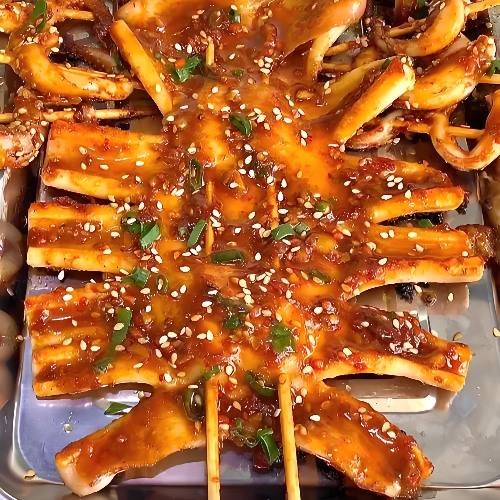
Grilled Squid on a Stick
I never knew what it was until my nose took me there. Our group walked through a night market in Qingdao, and all of a sudden this smoky smell wafted from one of the street vendors who was cooking up seafood on location. Locals would line up there, point at the skewered sea food, give a few kuai, then walk off chowing down. So I did the same thing. Just pointing at what seemed to be squid and saying, "Yí gè" (一个, meaning one).
The vendor then slathered it with a spicy oil and sprinkled cumin and chili powder liberally over the top. The first bite was chewy, but in a good way - not rubbery chewy. Smoky flavor, pungently savory with a spice to offset it - yes, I can see where this becomes popular. This is something coastal cities do best.Qingdao, Xiamen, anything where there's salt in the air. Even the daymarkets of Shanghai have fair-to-decent versions!The sheer variety of these stalls just demonstrates how deeply Chinese snacks connect with the tastes of the people here.
Expect to pay ¥10-15 a stick, depending on how big it is and where you are ordering it! Just point and say "yīgè" (一个 comes from Mandarin meaning "one". If you would like it mildly spicy, try "wēi là" (微辣). Most stallholders will understand or at least they understood my noisy pronunciation.This was it. The snack that got me over my fear of street food. If you can eat squid on a stick, you can eat pretty much anything sold in a Chinese street afternoon market. No wonder this is one of the most popular Chinese snacks in morning markets.
Night markets are the true paradise for street food lovers; read 12 Best Night Markets in Guangzhou: Street Food and Souvenirs Full of Local Vibes to check the full food map.
Chinese Crepes (煎饼果子) - The Breakfast Hero
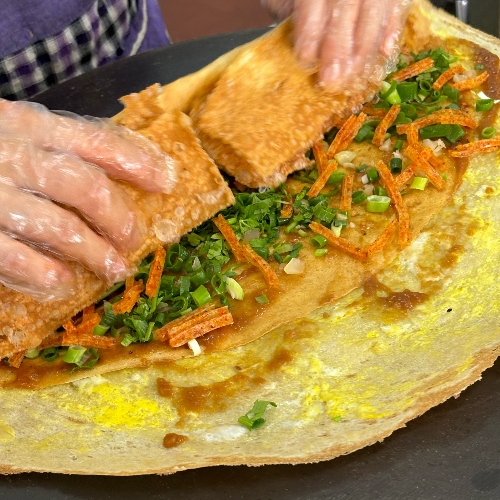
Chinese Crepes
This became my Monday 8am ritual. There was a cart outside the subway station exit, always there at 7:30am, always with a line. I watched the vendor make these for two weeks before actually ordering one. She'd pour batter on a hot griddle, spread an egg on top, add scallions, brush on sauce, throw in a crispy cracker (脆饼), fold it up, and hand it over in under three minutes. The whole process was mesmerizing.
Chinese breakfast crepes are hot, filling, and fast. You can customize them—I always said "bù yào xiāng cài" (不要香菜, no cilantro) because cilantro tastes like soap to me. Most vendors got used to my order after the second week. The price was around ¥6-10 per crepe, which is absurdly cheap for breakfast that actually keeps you full until lunch.
You'll find these at morning street carts, usually between 7am and 10am. Look near university gates, subway exits, anywhere people commute. Everyone has their favorite cart. Mine was the lady at Jing'an Temple Station Exit 7. I have no idea if she's still there, but if you're in Shanghai, check. The crispy cracker inside makes all the difference. That's the key component. Without it, it's just a decent crepe. With it, it's perfect.
Missed out on Shanghai’s famous street snacks? Check 2025 Guide to Shanghai Food: Eat Like a Local and relive the taste of jianbing and more.
Stinky Tofu (臭豆腐) - The Dare You Have to Take
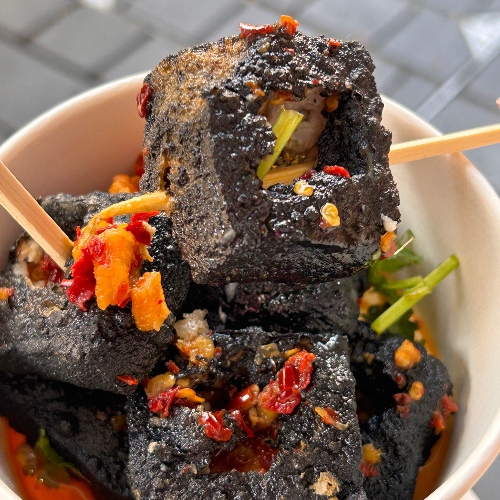
Stinky Tofu
Honestly, this one challenges you indeed--I could smell it two blocks away from where they sell them. My initial reaction was to head off in the opposite direction. But a good friend of mine ( she's Chinese ) grabbed me and insisted that I buy some. She said, without eating stinky tofu once you can't ever understand Chinese street food culture. I doubt very much whether that's true.
Here is the incredible thing: the smell is terrible -- like spoiled, fermented garbage. but the flavor... Is not that bad? MIN is not to say it 's good, but it 's also better than the smell suggests. It 's a blue cheese argument--smells more horrible than it tastes. They deep-fry small cubes of tofu, coat it in sweet or spicy sauce, and often add a bit of pickled cabbage. In my opinion it should be tried at least once. Some people love it. I 'm not one of them, but I can respect the...UIAlertAction
Usually you can expect to pay ¥8-12 per serving, but rates can best be checked by city. For a milder version, go to Taiwan. Here, Taipei's stinky tofu is not quite as strong. For an authentic hardcore experience, Hunan's Changsha is the place. When you first eat stinky tofu, you hold your breath. Then after chomping down a piece of it, the second one is up to you... I managed three pieces before I had to quit. It meets with a variety of reactions--but remains one of the most iconic and popular Chinese snacks ever created.
Fresh Fruit on a Stick (水果串) - The Refreshing Closer
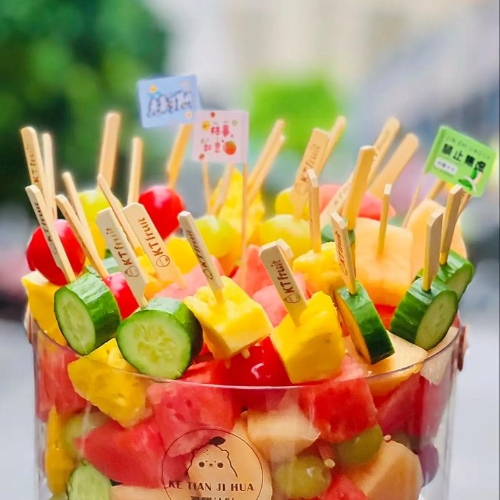
Fresh Fruit on a Stick
After a meal of all that hot stuff, you need this. In summer night markets, there are always fruit vendors with strawberries, grapes, and sometimes cherry tomatoes (yes, tomatoes count as fruit here). They might be plain and cold, or dipped lightly in syrup just as if they were a miniature version of candied hawthorn. Simple, refreshing and not difficult at all.
The genius of fruit on a stick is, it functions as a palate cleanser. When you munch on cold strawberries after having had squid and spicy whatever, I mean it feels just perfect. You get these at just about any night market, and also parks on weekends - anywhere there is a crowd, really. Prices go for around ¥5-8 per stick. Some vendors offer the candied version, but I like plain fruit better. It's less messy, and you can actually taste the fruit. Eat this after you gobble up spicy street food. Your taste buds will thank you. This light treat works off the heat of other popular Chinese snacks excellently.
Real Talk: Tips from Three Semesters in China
Where to Start Your Snack Journey
Family Mart (全家) is everywhere and most items have English labels. That's where I started. Carrefour (家乐福) has a huge selection but can be overwhelming at first. If you want something more modern, Hema (盒马) is clean and organized, though prices are slightly higher. For street food, university areas are safe and cheap—students vet everything. Night markets are more authentic but expect crowds, especially on weekends.
If you're in specific cities, check out Huangxing Road Walking Street (黄兴路步行街) in Changsha, or Muslim Quarter (回民街) in Xi'an. Both have insane snack variety. I spent an entire evening at Muslim Quarter just sampling things. Probably spent ¥50 total and ate way too much.
Money Matters (What I Learned the Hard Way)
A comfortable daily snack budget is around ¥20-30. You can definitely do less if you stick to packaged items. Street food averages ¥8-15 per item. My money-saving hack was buying big bags from supermarkets and keeping them in my dorm. Way cheaper than buying individual packs every day.
Download WeChat Pay or Alipay immediately when you arrive. Many vendors don't take cash anymore, and I had to learn this during week one. Just stood there trying to hand a vendor a ¥10 note while everyone behind me paid with their phones. Embarrassing but educational. Having mobile payment set up made everything smoother. No fumbling with change, no language barrier for numbers.
Essential Survival Phrases (My Most-Used)
These six phrases covered 90% of my snack interactions: "这是什么?" (Zhè shì shén me?) means "What is this?"—used constantly. "多少钱?" (Duō shǎo qián?) is "How much?"—self-explanatory. "我要一个" (Wǒ yào yí gè) translates to "I want one." "不要香菜" (Bù yào xiāng cài) is "no cilantro"—crucial if you hate cilantro like I do. "微辣" (Wēi là) means "mild spicy"—saved me from many regrets. And "谢谢!" (Xiè xie!) is just "thanks."
Save these in your phone notes. If your pronunciation is bad (like mine was), just show vendors your phone screen. Nobody judges you for it. I did this for months before my Mandarin improved.
Allergy & Dietary Heads-Up
If you're vegetarian, learn to ask "有肉吗?" (Yǒu ròu ma?)—that's "does it have meat?" Peanuts and seafood show up in random places, so check ingredients if you have allergies. The spice levels are real: 微辣 (mild) < 中辣 (medium) < 特辣 (extra spicy) < 变态辣 (insanely spicy). Don't mess around with 变态辣 unless you genuinely enjoy pain. For halal options, look for 清真 (Qīng zhēn) signs—those places follow Islamic food rules.
Common Questions About Popular Chinese Snacks (FAQ)
Q: What are some of the most popular Chinese snacks right now?
As of 2025, favorites include White Rabbit candy, Want Want rice crackers, spicy gluten strips (辣条), dried tofu, and vacuum-packed duck neck. On social media, younger Chinese love Three Squirrels nut packs, Genki Forest sugar-free drinks, and matcha-flavored snacks. Traditional picks like candied hawthorn (糖葫芦) and sesame balls (芝麻球) are also trending again thanks to nostalgic marketing.
Q: Which Chinese snack should a first-time visitor try?
Start with something mild and familiar, like Want Want rice crackers or White Rabbit candy. They’re sweet or savory without shocking flavors. Once you’re comfortable, move to spicy duck neck or stinky tofu for the real local experience. The key is pacing—try one new item each day, especially at night markets where you can see what locals are buying.
Q: Are Chinese snacks generally sweet or savory?
China’s snack culture leans savory overall. You’ll find more soy, chili, and peppercorn-based flavors than sugary ones. Even sweet snacks like red bean cakes or mooncakes tend to balance sweetness with salt or umami. This is why Western visitors often find Chinese sweets less intense compared to American candy.
Q: What snack is commonly eaten after dinner in China?
After-dinner snacks are light—fresh fruit like watermelon, oranges, or grapes are the norm. In northern China, sunflower seeds (瓜子) are classic, especially during TV time. Younger generations might go for milk tea, packaged biscuits, or dried fruit, but heavy snacks after dinner aren’t common in Chinese households.
Q: What are Gen Z’s favorite snacks in China?
Gen Z trends change fast, but right now you’ll see salted egg yolk chips, collagen gummies, instant spicy noodles, and zero-sugar drinks everywhere. Many of these trends come from platforms like RED (Xiaohongshu) (China’s Instagram). Aesthetic packaging and photo-worthiness often matter as much as taste.
Q: What is the difference between traditional and modern Chinese snacks?
Traditional snacks come from specific regions—like Suzhou’s sesame candy or Beijing’s tanghulu—and use local ingredients. Modern snacks lean toward convenience, health claims, or viral appeal. For example, a spicy gluten strip brand might now promote “low-fat” packaging while keeping the nostalgic flavor. You’ll often find both types sitting side-by-side in convenience stores.
Q: Can you buy authentic Chinese snacks outside China?
Yes, but selection and price vary. In the U.S., check Asian supermarkets like 99 Ranch or online stores like Yamibuy. UK readers can find options in London Chinatown or Chinese supermarkets like SeeWoo. Prices are usually 2–3 times higher than in China, and fresh items like duck neck or street-style tofu are rarely exported due to customs restrictions.
Q: Which snacks are vegetarian or vegan-friendly?
Many plant-based snacks exist—rice crackers, dried tofu, fruit chips, and hawthorn slices are safe bets. Check packaging for words like “素食” (vegetarian) and avoid anything labeled “香辣” (spicy meat flavor) unless you can confirm ingredients. Some cookies use lard, and “vegetarian meat” snacks may still contain fish sauce.
Q: What are the healthiest Chinese snacks to buy?
If you want to stay light, go for dried fruits, roasted chestnuts, or unsalted nuts from Three Squirrels. Dried tofu is protein-rich and relatively clean. Avoid too many fried or high-sodium items like spicy gluten or duck neck. Still, portion size matters more than the label—many Chinese snacks are individually wrapped to encourage moderation.
Q: What’s the most famous Chinese appetizer served at meals?
Cold dishes known as “凉菜” (liáng cài) often start Chinese meals. Examples include marinated cucumber, spicy peanuts, or sliced beef tendon. Though not exactly “snacks” by Western definition, they’re served in small plates before the main course and showcase the same balance of flavor you’ll find in popular street snacks.
